Kichler Lighting Jade 300030 Manuel utilisateur
- Catégorie
- Ventilateurs ménagers
- Taper
- Manuel utilisateur
Ce manuel convient également à

Instruction Manual
Jade
UL Model #300030xxx
300030
Includes Wall Control

1
1. To reduce the risk of electric shock, insure
electricity has been turned off at the circuit
breaker or fuse box before beginning.
2. All wiring must be in accordance with the
National Electrical Code and local electrical
codes. Electrical installation should be
performed by a qualied licensed electrician.
3. WARNING: To Reduce The Risk Of Fire Or
Electric Shock, Do Not Use This Fan With
Any Solid-State Speed Control Device. Only
use the remote control provided by ceiling
fan manufacturer.
4. WARNING: To reduce the risk of personal
injury, use only the two steel screws (and
lock washers) provided with the outlet box for
mounting to the outlet box. Most outlet boxes
commonly used for the support of lighting
xtures are not acceptable for fan support
and may need to be replaced, consult a
qualied electrician if in doubt.
5. The outlet box and support structure must
be securely mounted and capable of reliably
supporting a minimum of 50 pounds. Use
only CUL Listed outlet boxes marked “FOR
FAN SUPPORT”.
6. The fan must be mounted with a minimum of
7 feet clearance from the trailing edge of the
blades to the oor.
7. Do not operate reversing switch while fan
blades are in motion. Fan must be turned off
and blades stopped before reversing blade
direction.
8. Avoid placing objects in the path of the
blades.
9. To avoid personal injury or damage to the fan
and other items, be cautious when working
around or cleaning the fan.
10. Do not use water or detergents when cleaning
the fan or fan blades. A dry dust cloth or
lightly dampened cloth will be suitable for
most cleaning.
11. After marking electrical connections, spliced
conductors should be turned upward and
pushed carefully up into outlet box. The wires
should be spread apart with the grounded
conductor and the equipment-grounding
conductor on one side of the outlet box.
12. Electrical diagrams are reference only. Light
Kits that are not packed with the fan must be
CUL Listed and marked suitable for use with
the model fan you are installing. Switches
must be CUL General Use Switches. Refer
to the Instructions packaged with the light
kits and switches for proper assembly.
1. SAFETY RULES (READ AND SAVE THESE INSTRUCTIONS)
WARNING
TO REDUCE THE RISK OF FIRE,
ELECTRIC SHOCK OR PERSONAL INJURY,
MOUNT FAN TO OUTLET BOX MARKED
“ACCEPTABLE FOR FAN SUPPORT”
WARNING
TO REDUCE THE RISK OF PERSONAL
INJURY, DO NOT BEND THE BLADE
BRACKETS (ALSO REFERRED TO AS
FLANGES) DURING ASSEMBLY OR AFTER
INSTALLATION. DO NOT INSERT OBJECTS
IN THE PATH OF THE BLADES.
WARNING
CHANGES OR MODIFICATIONS TO THIS
UNIT NOT EXPRESSLY APPROVED BY THE
PARTY RESPONSIBLE FOR COMPLIANCE
COULD VOID THE USER’S AUTHORITY TO
OPERATE THE EQUIPMENT.
FCC ID: RGB-60ORIR. This device complies with part 15 of the FCC rules. Operation is subject to the following two conditions:
(1) this device may not cause harmful interference, and (2) this device must accept any interference received, including
interference that may cause undesired operation. Changes or modications not expressly approved by the party responsible for
compliance could void the user’s authority to operate the equipment.

2
60” Jade
2. TOOLS AND MATERIALS REQUIRED
• Phillips screw driver
• Blade screw driver
• 11mm wrench
• Step ladder
• Wire cutters
3. PACKAGE CONTENTS
Unpack your fan and check the contents.
You should have the following items:
a. Fan blades (3)
b. Canopy, Ceiling mounting bracket
and Canopy bottom cover
c. Ball/downrod assembly
d. Coupling cover
e. Fan motor assembly
f. Light kit pan
g. Light kit pan shade
h. Extra non-light cap (for fan without
light kit)
i. Receiver
j. Wall transmitter
k. Parts bag contents:
1) Mounting hardware:
Star washers (2), wire nuts (3),
machine screws (2), washers (2),
wood screws (2)
2) Blade attachment hardware:
screws (10), ber washers (10)
3) Safety cable hardware:
wood screw, lock washer, at
washer
4) Balancing kit
a.
b.
c.
d.
e.
f.
g.
h.
i.
j.
k.
®

3
4. MOUNTING OPTIONS
If there isn’t an existing UL (cUL for Canadian
Installation) listed mounting box, then read the
following instructions. Disconnect the power by
removing fuses or turning off circuit breakers.
Secure the outlet box directly to the building structure.
Use appropriate fasteners and building materials. The
outlet box and its support must be able to fully support
the moving weight of the fan (at least 50 lbs). Do not
use plastic outlet boxes.
Figures 1, 2, and 3 are examples of different ways to
mount the outlet box.
NOTE: If you are installing the ceiling fan on a sloped
(vaulted) ceiling, you may need a longer downrod
to maintain proper clearance between the tip of the
blade and the ceiling. A minimum clearance of 12” is
suggested for optimal operation.
NOTE: Depending on the location you have selected
for installation, you may need to purchase and install
a “Joist Hanger” for the support of the outlet box.
Make sure the joist hanger you purchase has been
designed for use with ceiling fans. (Fig. 4)
Outlet box
Provide strong
support
Recessed
outlet box
Ceiling
mounting
plate
Outlet box
Outlet box
ANGLED CEILING
MAXIMUM 30
°
ANGLE
Fig. 2
Fig. 1
Fig. 3
Fig. 4

4
60” Jade
5. HANGING THE FAN
REMEMBER to turn off the power before you
begin.
To properly install your ceiling fan, follow the
steps below.
Step 1. Remove the decorative canopy bottom
cover from the canopy by turning the cover
counterclockwise. (Fig.5)
Step 2. Remove the ceiling mounting bracket
from the canopy by removing(and save) one of
the two screws. Loosen the remaining screw by
a half turn. (Fig.5)
Step 3. Pass the 120 volt supply wires from
the ceiling outlet box through the center of the
ceiling mounting bracket. (Fig. 6)
Step 4. Attach the ceiling mounting bracket to
the outlet box using the screws and washers
included with the outlet box. (Fig. 6)
Step 5. Remove the hanger ball from the
downrod assembly by loosening the setscrew,
removing the cross pin and turning the ball off
the downrod. (Fig. 7)
Step 6. Loosen the two setscrews and remove
the hitch pin and retaining clip from the coupling
on top of the motor assembly. (Fig. 8)
Step 7. Carefully route the electrical supply
wires and safety cable exiting the top of the fan
motor assembly through the downrod. Thread
the downrod into the coupling until the hitch pin
holes are aligned. (Fig. 8)
Next, replace the hitch pin and retaining clip.
Tighten both setscrews. (Fig. 8)
Fig. 6
Fig. 5
Mounting screws
(supplied with
electrical box)
Hook
Ceiling
mounting
bracket
UL Listed
outlet box
120V Wires
Washers
Ceiling mounting
bracket
Canopy
Canopy cover
Cross pin
Hanger ball
Set screw
Downrod
Fig. 7
Supply wires
& Safety cable
Downrod
Retaining clip
Hitch pin
Set screws
Coupling
Set screws
Fig. 8

5
Registration slot
Check tab
Cross pin
Hanger ball
Set screw
Downrod
Coupling
Canopy
Canopy cover
Coupling cover
Supply wires & Safety cable
Step 8. Slip the coupling cover, canopy cover and
canopy onto the downrod. (Fig. 9)
Thread the hanger ball onto the downrod, insert the
cross pin through the downrod and tighten. Now
tighten the set screw. (Fig. 9)
Step 9. Lift the motor assembly into position and
place the hanger ball into the ceiling mounting
bracket.
Rotate the entire assembly until the “Check Tab”
has dropped into the “Registration Slot” and seats
rmly. (Fig. 10)
The entire motor assembly should not rotate (left or
right) when seated properly.
WARNING: Failure to reattach the cross pin and
seat the “Check Tab” can cause the fan to fall from
the ceiling during operation. Take special care to
make sure this pin is reattached.
Fig. 9
Fig. 10

6
60” Jade
Code switch
HI
MED
LOW
FAN OFF
1 2 3 4
1234
ON
Receiver
Hanger
bracket
Hanger bracket
Safety cable
Attach safety cable
to ceiling joist with
screw and washer
6. INSTALLATION OF SAFETY SUPPORT
(Required for Canadian installation ONLY)
A safety support cable is provided to help prevent the
ceiling fan from falling, please install it as follows.
Step 1. Attach the provided wood screw and washers
to the ceiling joist next to the mounting bracket but do
not tighten. (Fig. 11)
Step 2. Adjust the length of the safety cable to reach
the screw and washers by pulling the extra cable
through the cable clamp until the overall length is
correct, put the end of the cable back through the cable
clamp, forming a loop at the end of the cable. Tighten
the cable clamp securely. Now, put the loop in the end
of the safety cable over the wood screw securely.
NOTE: Although the safety support cable is required
for Canadian installations only. It’s a good idea to make
the attachment with any installation.
7. ELECTRICAL CONNECTIONS
WARNING: To avoid possible electrical shock, be sure
you have turned off the power at the main circuit panel.
NOTE: The frequencies on your receiver and wall
transmitter have been preset at the factory. Before
installing the receiver, make sure the dip switches on
the receiver and wall transmitter are set to the same
frequency. (Fig. 12)
Step 1. Insert the receiver into the ceiling mounting
bracket with the at side of the receiver facing the
ceiling. (Fig. 13)
For best performance, make sure the Black antenna,
on the end of the receiver, remains extended and not
tangled with any of the electrical wires.
Fig. 11
Fig. 13
Fig. 12

7
8. FINISHING THE INSTALLATION
Step 2. Motor to Receiver Electrical connections (Fig.14).
Connect the black wire from the fan to the black wire marked ”TO
MOTOR L” on the receiver.
Connect the white wire from the fan to the white wire marked ”TO
MOTOR N” from the receiver. Connect the blue wire from the fan
to the blue wire marked ”FOR LIGHT” from receiver. Secure all
the wire connections with the plastic wire nuts provided.
Step 3. Receiver to House Supply Wires Electrical Connections:
Connect the black (hot) wire from the ceiling to the black wire
marked “AC in L” from the receiver. Connect the white (neutral)
wire from the ceiling to the white wire marked ”AC in N” from the
Receiver. Secure the wire connections with the plastic wire nuts
provided. (Fig. 14)
Step 4. If your outlet box has a ground wire (green or bare
copper) connect it to the fan ground wires; otherwise connect the
hanging bracket ground wire to the mounting bracket. Secure the
wire connection with a plastic nut provided. After connecting the
wires, spread them apart so that the green and white wires are
on one side of the outlet box and black and blue wires are on the
other side. Carefully tuck the wire connections up into the outlet
box. (Fig.14)
NOTE: Fan must be installed at a maximum distance of 30 feet
from the wall transmitter for optimal signal transmission between
the transmitter and the fan’s receiver unit.
Step 1. Tuck all the connections neatly into the ceiling outlet box.
Step 2. Slide the canopy up to the mounting bracket and
place one of the key hole slots over the mounting screw on the
mounting bracket. Rotate the canopy until the screw head locks
in place at the narrow section of the key hole. (Fig.15)
Step 3. Align the remaining circular hole on the canopy with
the remaining hole on the Ceiling Mounting Bracket. Insert
and tighten the mounting screw you removed earlier and the
mounting screw from step 2 above. Now, attach the canopy
cover to the mounting screw heads by inserting the screw heads
into the bottom side of the canopy cover and rotating the cover
clockwise.
NOTE: Adjust the canopy screws as necessary until the canopy
and canopy cover are snug.
Fig. 15
Fig. 14
Outlet box
Ceiling
mounting
bracket
Canopy
Canopy
cover
Screw
Screw
White (neutral)
Green or bare
copper (ground)
White ("AC IN N")
Outlet box
Black (hot)
Black ("AC IN L")
Receiver
White (neutral)
White ("to motor N")
Ground
(green)
(Connect to
ground wire on
hanger bracket
if no house
ground wire
Black ("to motor L")
Blue (for light)
Blue (for light)
Black (motor)

8
60” Jade
Light kit pan
Fan motor assembly
Screws
White
Black
Blue
9. ATTACHING THE FAN BLADES
Step 1. Attach a blade to the fan motor assembly
by rst inserting the blade into the slot in the side
of the fan motor assembly.
Step 2. Insert a screw into the bracket. Repeat for
the two remaining screws.
Step 3. Tighten each screw securely.
Step 4. Repeat these steps for the remaining
blades.
9
Fan motor assembly
Screw
Blade
10. INSTALLING THE LIGHT FIXTURE
Step 1. Remove one screw from the black
bracket below the fan motor assembly. Loosen,
but do not remove the other two screws.
Step 2. Connect the blue wire exiting the bottom
of the fan motor assembly with the black wire
from the top of the light xture.
Step 3. Connect the white wire exiting the bottom
of the fan motor assembly with the white from the
top of the light xture.
Step 4. Attach the light xture to the fan motor
assembly by securing with the two screws
loosened in rst step. Push the light xture up to
engage the screw heads in the screw slots and
turn to secure. Tighten each screw rmly.
Fig. 16
Fig. 17

9
Non-light cap
Light kit pan
Glass Shade
Fig. 18
Fig. 19
11. INSTALLING THE SHADE
Place the glass shade into the light kit pan, aligning
the three at areas on the top ange of the shade
with the three raised dimples in the light kit pan.
Turn the shade clockwise until it stops. (Fig. 18)
NOTE: Do not overtighten when installing the
shade into the light kit. Allow the shade to cool
completely before removing.
If you install your fan without the light kit, do not
install the light kit tter assembly and follow step
below.
Place the non-light cap into the light kit pan,
aligning the three at areas on the top ange of the
non-light cap with the three raised dimples in the
light kit pan. Turn the non-light shade clockwise
until it stops. (Fig.19)

10
60” Jade
12. INSTALLING THE BATTERIES
Remove the face plate of the Wall Switch by
lifting at the top and then inserting the supplied
12V battery. Duracell MN21/Eveready A23/ GP
23A all 12V.
Replace the switch face plate.
To prevent possible damage to the transmitter,
remove these batteries if not used for long
periods of time (months).
13. OPERATING INSTRUCTIONS
HI Button = High Speed
MED Button = Medium Speed
LOW Button = Low Speed
FAN OFF Button = Motor Off
LIGHT Button = Light ON or OFF
REV Button = The “REV” button is
used to set the fan
forward or reverse,
press the button
forward (for warm
weather) or reverse
(for cool weather).
Speed settings for warm or cool weather depend
on factors such as the room size, ceiling height,
number of fans and so on.
NOTE: To operate the reverse function on this
fan, press the reverse button while the fan is
running.
HI
MED
LOW
FAN OFF
ON ECE
1234
23AE 12V
Fig. 21
Fig. 20

11
14. INSTALLING THE BASIC FUNCTION
WALL CONTROL SYSTEM WALL
PLATE
Select a location to install the Basic Function Wall
Control System Transmitter and Wall Plate.
REMEMBER you can safely use the transmitter
outdoors but it should be mounted indoors away
from contact with water or humidity.
Install the wall plate using an existing wall switch
outlet box. Make sure the electrical power is
TURNED OFF at the main panel before continuing.
Step 1. Remove the existing wall plate and the
old switch from the wall outlet box. Wire nut the
BLACK leads (hot) together and push back inside
the outlet box. (Fig. 22)
Step 2. Install the wall plate on the existing wall
outlet box using the screws provided. (Fig. 23)
After installing the wall anchors, attach the wall
plate with the mounting screws to nish the
installation.
Wall plate
Switch
Outlet box
Screws
Outlet box
Screws
Wall plate
Switch
Fig. 23
Fig. 22

12
60” Jade
15. OPERATING INSTRUCTIONS
The Black Slide Switch on the side of the switch
housing controls the direction of the blades
“Forward and Reverse”.
Warm weather - Forward (counter clockwise).
A downward airow creates a cooling effect as
shown in Fig. 24. This allows you to set your air
conditioner to warm setting without affecting your
comfort.
Cool weather - Reverse (clockwise).
An upward airow moves warm air off the ceiling
area as shown in Fig. 25. This allows you to
set your heating unit on a cooler setting without
affecting your comfort.
NOTE: To change the direction of rotation for the
fan blades, locate the reverse switch located on
the top of the motor housing.
Fig. 24
Fig. 25

13
16. TROUBLESHOOTING
Problem
Fan will not start.
Fan sounds noisy.
Fan wobbles.
Remote control
malfunction.
Solution
1. Check circuit fuses or breakers.
2. Check all electrical connections to insure proper contact. CAUTION: Make sure the
main power is OFF when checking any electrical connection.
3. Make sure the transmitter batteries are installed properly. Positive (+) side facing out.
4. Insure the batteries have a good charge.
1. Make sure all motor housing screws are snug.
2. Make sure the screws that attach the fan blade brackets to the motor are tight.
3. Make sure wire nut connections are not rubbing against each other or the interior wall
of the switch housing. CAUTION: Make sure main power is off.
4. Allow a 24-hour “breaking-in period. Most noise associated with a new fan disappears
during this time.
5. If using an optional light kit, make sure the screws securing the glassware are tight.
Make sure the light bulbs are not touching any other component.
6. Do not connect this fan to wall mounted variable speed control(s). They are not
compatible with ceiling fan motors or remote controls.
7. Make sure the upper canopy is a short distance from the ceiling. It should not touch
the ceiling.
1. Check that all blade and blade arm screws are secure.
2. Most fan wobbling problems are caused when blade levels are unequal. Check this
level by selecting a point on the ceiling above the tip of one of the blades. Measure
this distance. Rotate the fan until the next blade is positioned for measurement.
Repeat for each blade. The distance deviation should be equal within 1/8”.
3. Use the enclosed Blade Balancing Kit if the blade wobble is still noticeable.
4. If the blade wobble is still noticeable, interchanging two adjacent (side by side) blades
can redistribute the weight and possibly result in smoother operation.
1. Ceiling fans with remote control systems CAN NOT be operated in conjunction with
any other control system EXCEPT a basic On/Off wall switch, if desired.
2. Make sure the frequency dip switches in the transmitter and receiver have identical
settings.
3. Make sure the Black Antenna on the receiver is NOT tangled with any other electrical
wires and is extended around the inside of the ceiling canopy.
18. SPECIFICATIONS
Fan size Speed Volts Amps Watts RPM CFM CFM/W N.W. G.W. C.F.
60”
High
120
0.56 67.4 160 7234 107
10.5
kgs
12.2
kgs
2.47’Medium 0.38 31.5 105 4677 148
Low 0.26 14.5 70 3117 215
These are approximate measurements. They do not include data for any lamps or xtures attached to the ceiling fan.

Kichler
®
Lighting
7711 East Pleasant Valley Road
P.O. Box 318010
Cleveland, Ohio 44131-8010
Customer Service
866.558.5706
8:30 AM to 5:00 PM EST,
Monday - Friday

Guide d’instructions
Jade
Modèle UL nº 300030xxx
300030
Comprend une commande murale

1
1. Pour réduire les risques d’électrocution, s’assurer
que le courant est coupé au niveau de la boîte de
disjoncteurs ou de fusibles avant de procéder à
l’installation.
2. Tout le câblage doit être conforme aux codes
électriques locaux et au Code électrique national.
L’installation électrique doit être effectuée par un
électricien qualié accrédité.
3. AVERTISSEMENT : Pour réduire les risques
d’incendie ou d’électrocution, n’utilisez ce ventilateur
avec aucun appareil de réglage de vitesse
transistorisé. Utilisez uniquement la télécommande
fournie par le fabricant du ventilateur de plafond.
4. AVERTISSEMENT : Pour réduire les risques de
blessures, n’utilisez que les deux vis en acier (et
rondelles de blocage) fournies avec la boîte de
sortie de courant pour l’installation de la boîte de
sortie de courant. La plupart des boîtes de sortie de
courant utilisées normalement pour le support de
luminaires ne sont pas capables de supporter un
ventilateur et ont besoin d’être remplacées; veuillez
consulter un électricien qualié en cas de doute.
5. La boîte de sortie de courant et la structure
doivent être solidement xées et capables de
supporter un minimum de 23 kg (50 lb) de façon
sûre. Utilisez uniquement des boîtes de sortie
de courant homologuées CUL, conçues « POUR
SUPPORTER UN VENTILATEUR ».
6. Le ventilateur doit être installé avec une distance
minimale de 2,13 m (7 pi) entre le bas des pales
et le sol.
7. N’activez pas l’interrupteur d’inversion lorsque les
pales sont en mouvement. Le ventilateur doit être
éteint et les pales immobiles avant d’inverser le
sens de rotation des pales.
8. Ne placez pas d’objets dans la trajectoire des
pales.
9. Pour éviter les blessures ou éviter d’endommager
le ventilateur ou d’autres objets, faites preuve de
prudence en travaillant près du ventilateur ou en le
nettoyant.
10. N'utilisez ni eau ni détergents pour nettoyer le
ventilateur ou les pales du ventilateur. Un chiffon
à poussière ou un linge légèrement humide
conviennent en général pour le nettoyage.
11. Après avoir effectué les branchements électriques,
retournez les conducteurs épissés vers le haut et
insérez-les soigneusement dans la boîte de sortie
de courant. Les ls doivent être écartés de façon à
ce que le conducteur mis à la terre et le conducteur
de mise à la terre de l’équipement soient du même
côté de la boîte de sortie de courant.
12. Les schémas électriques sont fournis à titre indicatif
seulement. Les luminaires qui ne sont pas compris
avec le ventilateur doivent être homologués CUL
et porter une mention spéciant qu’ils peuvent
être utilisés avec ce type de ventilateur. Les
interrupteurs doivent être homologués CUL pour
usage général. Consultez les instructions fournies
avec les luminaires et les interrupteurs pour un
assemblage approprié.
1. CONSIGNES DE SÉCURITÉ (LISEZ ET CONSERVEZ CES INSTRUCTIONS)
AVERTISSEMENT
POUR RÉDUIRE LES RISQUES D’INCENDIE,
D’ÉLECTROCUTION OU DE BLESSURE,
INSTALLEZ LE VENTILATEUR SUR UNE BOÎTE
DE SORTIE DE COURANT PORTANT LA MENTION
« CAPABLE DE SUPPORTER UN VENTILATEUR »
CODE D’IDENTIFICATION DE LA FCC : RGB-60ORIR. Ce produit est conforme à la section 15 des règles de la FCC.
Son fonctionnement est soumis aux deux conditions suivantes : (1) cet appareil ne doit pas causer d’interférences nuisibles, et (2) cet
appareil doit accepter toute autre interférence reçue, y compris les interférences pouvant entraîner un fonctionnement non désiré.
Toute altération ou modication qui n’est pas expressément approuvée par la partie responsable d’assurer la conformité pourrait annuler
le droit de l’utilisateur d’utiliser l’équipement.
AVERTISSEMENT
POUR RÉDUIRE LES RISQUES DE BLESSURE,
NE PLIEZ PAS LES SUPPORTS DE PALE (AUSSI
APPELÉS BRIDES) PENDANT L’ASSEMBLAGE
OU APRÈS L’INSTALLATION. NE PLACEZ PAS
D’OBJETS DANS LA TRAJECTOIRE DES PALES.
AVERTISSEMENT
EN CAS DE CHANGEMENT OU DE
MODIFICATION APPORTÉ(E) AU PRODUIT, QUI
N’EST PAS EXPRESSÉMENT APPROUVÉ(E)
PAR LA PARTIE RESPONSABLE D’ASSURER
LA CONFORMITÉ, L’UTILISATEUR POURRAIT
SE VOIR REFUSER LE DROIT D’UTILISER
L’APPAREIL.

2
Jade de 1,52m (60po)
2. OUTILS ET ÉQUIPEMENT REQUIS
• Tournevis cruciforme
• Tournevis plat
• Clé de 11 mm
• Escabeau
• Coupe-ls
3. CONTENU DE L’EMBALLAGE
Déballez votre ventilateur et vériez le contenu de
l'emballage. Les articles suivants devraient s’y trouver :
a. Pales du ventilateur (3)
b. Monture, support de montage au plafond et couvercle
inférieur de la monture
c. Ensemble boule/tige de suspension
d. Couvercle d’accouplement
e. Moteur du ventilateur
f. Bac de luminaire
g. Abat-jour en verre
h. Capuchon supplémentaire Pas de luminaire
(pour un ventilateur sans luminaire)
i. Récepteur
j. Transmetteur mural
k. Contenu du sac de pièces :
1) Quincaillerie de montage :
Rondelles en étoile (2),
capuchons de connexion (3),
vis mécaniques (2), rondelles (2),
vis à bois (2)
2) Quincaillerie de xation des pales :
vis (10), rondelles en bre (10)
3) Quincaillerie pour câble de sécurité :
vis à bois, rondelle de blocage, rondelle plate
4) Nécessaire d’équilibrage
a.
b.
c.
d.
e.
f.
g.
h.
i.
j.
k.
®

3
4. OPTIONS D’INSTALLATION
Si une boîte de sortie de courant homologuée UL (cUL
pour les installations au Canada) n’est pas déjà installée,
lire les instructions suivantes. Couper l’alimentation en
retirant les fusibles ou en déclenchant les disjoncteurs.
Fixer la boîte de sortie de courant directement à la
structure du bâtiment. Utiliser les pièces de xation et
les matériaux de construction appropriés. La boîte de
sortie de courant et son support doivent être en mesure
de supporter le plein poids du ventilateur en mouvement,
soit au moins 23 kg (50 lb). Ne pas utiliser une boîte de
sortie de courant en plastique.
Les Figures 1, 2 et 3 montrent des exemples des
différentes façons d’installer la boîte de sortie de
courant.
REMARQUE : Si vous installez le ventilateur de plafond
sur un plafond incliné (en voûte), il se peut que vous
ayez besoin d’une tige de suspension plus longue
pour maintenir un dégagement adéquat entre le bout
de la pale et le plafond. Un dégagement minimum de
30,48 cm (12 po) est suggéré pour un fonctionnement
optimal.
REMARQUE : Selon l’emplacement choisi pour
l’installation, il se peut que vous ayez besoin d’acheter
et installer un « étrier à solive » pour soutenir la boîte
de sortie de courant. Assurez-vous que l’étrier à solive
que vous achetez est conçu pour une utilisation avec les
ventilateurs de plafond. (Fig. 4)
Fournir un
support robuste
Boîte de sortie
de courant
encastrée
Plaque de
montage
au plafond
Boîte de sortie de courant
Boîte de sortie
de courant
Boîte de sortie de courant
PLAFOND INCLINÉ
ANGLE DE 30° MAX
Fig. 2
Fig. 1
Fig. 3
Fig. 4

4
Jade de 1,52m (60po)
5. SUSPENSION DU VENTILATEUR
N’OUBLIEZ PAS de couper l’alimentation
électrique avant de commencer.
Pour installer correctement votre ventilateur de
plafond, suivez les étapes suivantes.
Étape 1. Retirez le couvercle décoratif inférieur de
la monture en le tournant dans le sens inverse des
aiguilles d’une montre. (Fig. 5)
Étape 2. Retirez le support de montage au plafond
de la monture en retirant (et conservant) l’une des
deux vis. Desserrez la vis restante d’un demi tour.
(Fig. 5)
Étape 3. Faites passer les ls d’alimentation de
120 volts par le centre du support de montage au
plafond. (Fig. 6)
Étape 4. Fixez le support de montage au plafond
sur la boîte de sortie de courant à l’aide des vis
et rondelles fournies avec la boîte de sortie de
courant. (Fig. 6)
Étape 5. Retirez la boule de suspension de la tige
de suspension en desserrant la vis de pression,
retirant la contre-goupille et tournant la boule pour
la retirer de la tige de suspension. (Fig. 7)
Étape 6. Desserrez les deux vis de pression
et retirez la goupille d’attelage et l’agrafe de
l’accouplement sur le dessus du moteur. (Fig. 8)
Étape 7. Faites passer avec soin les ls
d’alimentation électrique et le câble de sécurité
sortant du dessus du moteur du ventilateur par la
tige de suspension. Vissez la tige de suspension
dans l’accouplement jusqu’à ce que les trous de la
goupille d’attelage soient alignés. (Fig. 8)
Ensuite, remettez la goupille d’attelage et l’agrafe
en place. Serrez les deux vis de pression. (Fig. 8)
Fig. 6
Fig. 5
Vis de montage
(fournies avec
la boîte électrique)
Crochet
Support de
montage
au plafond
Boîte de sortie
de courant
homologuée UL
Fils de 120 volts
Rondelles
Support de montage
au plafond
Monture
Couvercle de monture
Contre-goupille
Boule de suspension
Vis de pression
Tige de suspension
Fig. 7
Fils d’alimentation
électrique et
câble de sécurité
Tige de suspension
Goupille d'attelage
Goupille
d'attelage
Vis de pression
Accouplement
Vis de pression
Fig. 8
La page est en cours de chargement...
La page est en cours de chargement...
La page est en cours de chargement...
La page est en cours de chargement...
La page est en cours de chargement...
La page est en cours de chargement...
La page est en cours de chargement...
La page est en cours de chargement...
La page est en cours de chargement...
La page est en cours de chargement...
-
 1
1
-
 2
2
-
 3
3
-
 4
4
-
 5
5
-
 6
6
-
 7
7
-
 8
8
-
 9
9
-
 10
10
-
 11
11
-
 12
12
-
 13
13
-
 14
14
-
 15
15
-
 16
16
-
 17
17
-
 18
18
-
 19
19
-
 20
20
-
 21
21
-
 22
22
-
 23
23
-
 24
24
-
 25
25
-
 26
26
-
 27
27
-
 28
28
-
 29
29
-
 30
30
Kichler Lighting Jade 300030 Manuel utilisateur
- Catégorie
- Ventilateurs ménagers
- Taper
- Manuel utilisateur
- Ce manuel convient également à
dans d''autres langues
Documents connexes
-
Kichler 310155SBK Manuel utilisateur
-
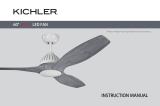 Kichler Lighting 310360SBK Manuel utilisateur
Kichler Lighting 310360SBK Manuel utilisateur
-
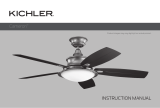 Kichler Lighting 310204WCP Manuel utilisateur
Kichler Lighting 310204WCP Manuel utilisateur
-
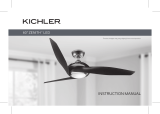 Kichler Lighting 300200PN Manuel utilisateur
Kichler Lighting 300200PN Manuel utilisateur
-
Kichler 330025BSS Manuel utilisateur
-
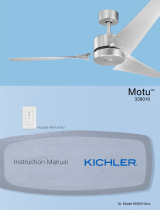 Kichler Lighting Motu Manuel utilisateur
Kichler Lighting Motu Manuel utilisateur
-
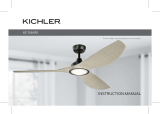 Kichler Lighting 300365MWH Manuel utilisateur
Kichler Lighting 300365MWH Manuel utilisateur
-
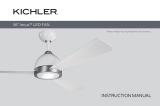 Kichler Lighting 300270SBK Manuel utilisateur
Kichler Lighting 300270SBK Manuel utilisateur
-
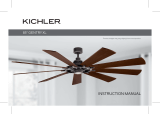 Kichler Lighting 300285AVI Manuel utilisateur
Kichler Lighting 300285AVI Manuel utilisateur
-
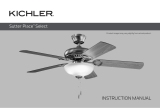 Kichler Lighting 339501AP Manuel utilisateur
Kichler Lighting 339501AP Manuel utilisateur
Autres documents
-
NOMA Landon Indoor Le manuel du propriétaire
-
NOMA Ashton 5-Blade 3-Speed Le manuel du propriétaire
-
NOMA Harper 4-Blade 6-Speed Outdoor Le manuel du propriétaire
-
NOMA Cassian Outdoor Le manuel du propriétaire
-
Progress Lighting P250030-009 Guide d'installation
-
Progress Lighting P250068-31M-WB Mode d'emploi
-
NOMA Bower Indoor Le manuel du propriétaire
-
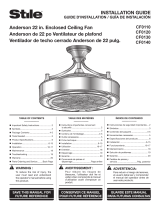 Stile CF0140 Mode d'emploi
Stile CF0140 Mode d'emploi
-
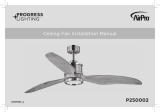 PROGRESS LIGHTNING P250002-143-30 Mode d'emploi
PROGRESS LIGHTNING P250002-143-30 Mode d'emploi
-
Progress Lighting P250030-009 Guide d'installation







































